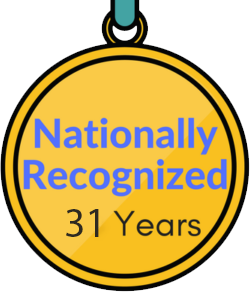What are some of the main types of floor services that you can get for your retail business? Continue reading to learn more.
Taking proper care of your retail space is of uttermost importance for creating a welcoming environment, reducing safety hazards, and keeping customers for a longer period of time. In addition, the way you present your retail business plays a pivotal role in shaping customer perceptions and influencing purchasing decisions.
One of the best ways to impact the overall aesthetic and functionality of your setting is by making sure that your floors are impeccable. From enhancing the visual appeal to ensuring durability under constant foot traffic, it is important to choose the types of floor services that will meet the demand of your unique retail environment.
In this article, we will discuss different types of floor services that you can leverage to your advantage. However, one thing you need to keep in mind is that not all floor cleaning companies offer the same type or variety of services.
If you are looking for a floor care services company that offers a complete end-to-end solution for your retail business, here are some of the main services offered by TCS Floors:
1. Industrial floor cleaning
Industrial floor cleaning is among the most important types of floor services, and it is designed to address the unique challenges posed by large retail spaces, warehouses, and industrial environments, where the volume of foot traffic and potential for spills or debris is considerably higher.
It creates a safer environment for customers and employees, contributes to a positive shopping experience for customers, and helps uphold the aesthetic appeal of the retail space. It often involves the use of heavy-duty equipment such as industrial-grade sweepers, scrubbers, and vacuum cleaners.
Beyond cleanliness, industrial floor cleaning also focuses on preserving the integrity and longevity of the flooring material. Regular maintenance can prevent wear and tear, extending the lifespan of the floors, and minimizing the need for costly replacements.
How often should I get industrial floor cleaning? The frequency at which you should get industrial floor cleaning varies depending on foot traffic, the material of the floor, the weather conditions, as well as the type of retail business. Working with a professional to determine the specific needs of your business is crucial – contact us today.
2. Deep floor cleaning
Among the most essential types of floor services is deep floor cleaning; in contrast with regular floor cleaning, it offers a more comprehensive and intensive approach designed to go beyond the routine cleaning tasks typically performed in day-to-day operations.
For example, while regular floor cleaning targets surface-level dirt and debris, deep floor cleaning goes beyond the surface, looking for hidden dirt and contaminants that accumulate over time. It addresses dirt embedded in grout lines, crevices, and pores of the flooring material.
In addition, deep floor cleaning may require more time for thorough cleaning and drying, potentially leading to temporary disruptions in the retail space. However, it is crucial for ensuring that you are getting regular deep floor cleaning to keep your environment perfectly safe and clean.
How often should I get deep floor cleaning? Deep floor cleaning is usually performed less frequently than regular floor cleaning. So, you may want to get it on a quarterly, semi-annual, or annual basis, depending on the specific needs of your retail business.
3. Stripping and waxing
Next on our list of types of floor services is stripping and waxing. This is a specialized floor maintenance service that involves the removal of old wax or finish layers from a hard surface floor, followed by the application of new wax to protect and enhance the floor’s appearance.
Not all retail businesses need it; it will depend on the type of your floor. This process is particularly common for vinyl, linoleum, and certain types of tile floors. Before initiating the process, TCS Floors will assess the current condition of your floor finish, determining the type of flooring material, as well as the thickness of the current wax or finish.
Stripping and waxing is a great way to restore the original shine and appearance of the floor, and improve its durability while preserving its integrity. It also provides a protective layer that guards against scratches, stains, and wear.
How often should I do stripping and waxing? The frequency of stripping and waxing for retail floors varies. High-traffic areas may need it every 6–12 months, while less frequented spaces may require less.
Regular visual inspections, seasonal considerations, and professional advice guide the optimal schedule. Balancing business needs, budget constraints, and prioritizing high-impact areas contribute to maintaining a clean, appealing retail environment.
4. Floor scrubbing
Floor scrubbing is a professional cleaning service using specialized machines with rotating brushes or pads. These machines scrub and lift dirt from various floor surfaces, providing a deep and efficient cleaning process.
Suitable for different floor types, floor scrubbing enhances safety, aesthetics, and overall cleanliness in retail spaces, contributing to a welcoming environment for customers and employees.
The process often begins with sweeping or vacuuming to remove loose debris and dust, preparing the floor for more thorough cleaning – after an assessment by the floor care company. Next, the appropriate brushes, pads, and cleaning solutions are selected based on the type of your floor.
The floor scrubbing machine is operated systematically, moving across the floor in a controlled manner. The brushes or pads agitate and scrub the surface, loosening and lifting dirt and contaminants.
Depending on the equipment and cleaning solution used, the floor may require some drying time. Proper ventilation is often encouraged to expedite the drying process.
How often should I get floor scrubbing? The frequency of floor scrubbing depends on factors like foot traffic, floor type, and cleaning goals. High-traffic areas may benefit from monthly or quarterly scrubbing, while less frequented spaces could suffice with semi-annual or annual sessions.
Regular assessments and professional advice guide the optimal schedule, ensuring a consistently clean and appealing retail environment.
5. Floor burnishing
Floor burnishing is a polishing process using high-speed machines equipped with a burnishing pad. This method enhances the shine of hard floor surfaces, such as vinyl, tile, or concrete, by smoothing and polishing the top layer – and it is one of the most important types of floor services for retail businesses.
The friction generated by the burnisher’s pad creates a glossy finish, improving the floor’s appearance and durability. Typically performed after floor scrubbing or stripping and waxing, floor burnishing contributes to a lustrous and well-maintained retail environment, elevating the overall aesthetic appeal and cleanliness of the space.
How often should I get floor burnishing? The frequency of floor burnishing depends on foot traffic and desired shine. High-traffic areas may benefit from monthly or quarterly burnishing, while low-traffic zones can extend the interval.
6. Floor buffing and polishing
Next on our list of types of floor services is floor buffing. It is a surface cleaning and polishing method using a low-speed buffing machine. This process smooths and refines the floor surface, enhancing its shine and appearance.
Buffing machines are equipped with soft pads that rotate to gently remove minor scratches, scuff marks, and dullness from the floor. Floor buffing is a less aggressive technique compared to burnishing and is often used for routine maintenance between more intensive floor care services.
It contributes to a cleaner, brighter retail environment, providing a polished finish to various hard floor surfaces like wood, tile, or marble.
How often should I get floor buffing? The frequency of floor buffing depends on foot traffic and floor condition. For high-traffic areas, we recommend monthly buffing, while for low-traffic areas, once every two months should be enough. If you are in doubt, don’t hesitate to get in touch with us.
7. Stain removal services
Last on our list of types of floor services for retail businesses are stain removal services. They involve targeted treatments to eliminate stubborn stains and discolorations from various types of flooring. Professionals use specialized cleaning agents and techniques to address specific stains such as oil, grease, food, or chemical spills.
The process considers the flooring material and the nature of the stain, ensuring effective removal without causing damage. Whether it’s carpets, tiles, or hardwood, stain removal services aim to restore the floor’s original appearance, contributing to a clean and inviting retail environment.
Regular assessments and prompt stain removal help maintain the overall aesthetic appeal and cleanliness of the floors.
How often should I get stain removal services? The frequency of stain removal services depends on the occurrence of stains. High-traffic areas prone to spills may benefit from more frequent stain removal, while lower-traffic zones can have less frequent sessions. Timely assessments and swift stain removal contribute to a consistently clean and well-maintained retail floor.
FAQ
What are the different types of floor services depending on the type of floor?
Floor services vary based on flooring types. Carpet cleaning targets fabric, tile services address grout and surface, hardwood refinishing revitalizes wood, and vinyl stripping with waxing enhances durability.
Other services include concrete polishing, natural stone restoration, laminate cleaning, epoxy coating for industrial floors, and linoleum sealing.
Specialized stain removal services cater to specific flooring needs. Tailoring services to flooring types ensures effective maintenance, longevity, and a visually appealing retail environment.
What is the classification of floors depending on traffic?
Floors are classified by traffic into low, medium, and high-traffic areas. Low-traffic spaces, like offices, need less frequent maintenance. Medium-traffic zones, such as hallways, require regular care.
High-traffic areas like entrances demand frequent and thorough floor services to preserve appearance and durability. Matching maintenance intensity with traffic patterns ensures efficient and effective care for retail floors.



